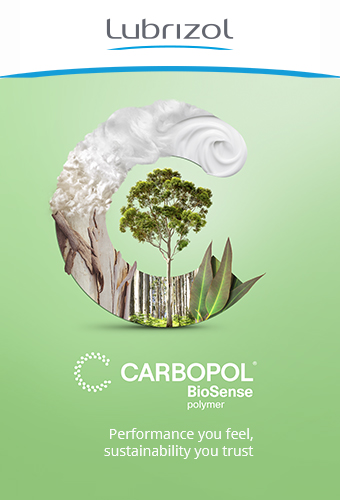Solidarity

Solidarity with the people affected by the disaster was the first response from the cosmetics industry after the giant earthquake and tsunami that struck the northern part of Honshu island on March 11.
Of course, Japanese groups strongly responded. Kao opted for product donations and announced it will dispatch to affected areas thousands of soaps, detergents, toothpaste and toothbrushes, as well as sanitary napkins, and diapers, etc. For its part, Shiseido, the leading Japanese cosmetics company, has announced a donation of 100 million yen (about 830,000 euros) and the shipment of shampoos dry, soaps and hand sanitizers.
The L’Oréal group also announced a donation of 100 million yens to the Japanese Red Cross. Canadian retailer Shoppers Drug Mart / Pharmaprix has pledged a US$ 150,000 donation and has launched a special operation for members of its loyalty program. Procter & Gamble, Amway, Temptu, Lush Shu Uemura, Hanae Morris also joined the charity movement.
Industrial disorganisation
Another emergency for the industry is to respond to the immediate consequences the disaster had on the market.
The earthquake and tsunami destroyed or damaged a part of production facilities and infrastructures. Beyond the area directly affected in the Sendai area, which accounted for 7-8% of the Japanese GDP, the energy crisis consecutive to the accident at the Fukushima Daiichi nuclear power plant is disrupting the production in much of the country. A month after the earthquake, there were still daily power outages and the problem is still far from being entirely solved.
Logistical problems consecutive to the destruction of traffic infrastructures, amplified by the just-in-time organization of the economy, and of course the persistence of the nuclear risk, add up to the difficulties.
Economical analyses agree on a drop of the country’s GDP during the April-June quarter. The most optimistic forecast considers a 0.6% fall, while the worst scenario anticipates a 10% decrease. Most economists predict a return to growth for the July-September quarter, a real reconstruction-driven recovery being expected for the fourth quarter.
The disaster immediately impacted Japanese companies. Shiseido just announced a 62% drop in profits during its latter fiscal quarter (3.8 billion yens compared to 10 billion during the same quarter last year), a fall that is mainly due to the additional costs resulting from the March 11 earthquake.
Sourcing difficulties
However, global consequences should be limited. Of course, Japan remains the second largest market for cosmetics, but the penetration rate of foreign firms is relatively low and mostly confined to the high-end segments. Major world exporters should therefore absorb the shock, even if the travel retail business and sales of luxury goods will be affected initially.
The global cosmetics industry could instead experienced sourcing difficulties with ingredients and intermediate products manufactured in Japan. Indeed, a consequence of the technological advance in surface treatment acquired by the Japanese industry during the 1990s, 30 to 40% of treated pigments and of certain powders (including titanium oxides) currently used by the global makeup industry is supplied from Japanese companies such as Nippon Shikizai, Miyoshi Kasei (see update below) and Nikko Rica. Although the production facilities of these suppliers were not affected directly by the earthquake and the tsunami, they are impacted by the organizational disorganisation throughout Japan.
Health concerns
Even when the Japanese industry will have solved these problems, companies will have to reassure their customers about the safety of their products. From this point of view, the lack of responsibility of Japanese authorities is quite puzzling since, according to the Union European, they do not assess the level of radioactivity contamination on exported products.
Recognizing that the risk of contamination is not limited to food, DKSH, a leading distributor of Asian specialty chemicals, has announced the setting up of an internal task force responsible for collecting all data on possibly concerned products and to anticipate potential regulatory changes.
However, so far, no contamination of non-food goods from Japan was detected by importing countries.
In a statement dated March 30, 2011, the Japan Cosmetic Industry Association (JCIA), the organization representing Japanese cosmetics makers, said that air quality in production facilities is usually controlled. The association, however, admits that "slightly contaminated drinking water" can be used in the industrial process, but that the doses involved do not present any danger to health. But in a market consisting of highly substitutable products, more guarantees may be necessary in order to convince consumers! Shiseido thus announced in a statement dated April 22 and published on its website that, following tests conducted in collaboration with a third party, there was no radiation detected on their products made in Japan.
New consumption habits?
On the demand side, it is obvious that the short-term priorities of Japanese consumers will be redirected. What is absolutely unknown is the long-term impact of these disasters, especially of the nuclear accident at Fukushima Daiichi that directly unsettle the Japanese production and consumption model.
The need to share electric power resources, as well as TV reports on supply shortages affecting certain products and consumers testimonials saying that, after all, one’s can easily live with less superfluous stuff, might transform Japanese consumers.
It remains certain that Japan, which has already overcome other rough crises, still has the capacity to surprise us.
| Update 04 May, 2011 - Myoshi Kasei Europe informed us today that the initial difficulties experienced at their Japan facilities in the period following the earthquake and the tsunami are beeing solved and that no product shortage is anticipated for their customers. |



































